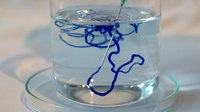
Photo from wikipedia
The textile industry is generating great environmental concerns due to the exponential growth of textile products’ consumption (fast fashion) and production. The textile value chain today operates as a linear… Click to show full abstract
The textile industry is generating great environmental concerns due to the exponential growth of textile products’ consumption (fast fashion) and production. The textile value chain today operates as a linear system (textile products are produced, used, and discarded), thus putting pressure on resources and creating negative environmental impacts. A new textile economy based on the principles of circular economy is needed for a more sustainable textile industry. To help meet this challenge, an efficient collection, classification, and recycling system needs to be implemented at the end-of-life stage of textile products, so as to obtain high-quality recycled materials able to be reused in high-value products. This paper contributes to the classification of post-consumer textile waste by proposing an automatic classification method able to be trained to separate higher-quality textile fiber flows. Our proposal is the use of near-infrared (NIR) spectroscopy combined with a mathematical treatment of the spectra by convolutional neural networks (CNNs) to classify and separate 100% pure samples and binary mixtures of the most common textile fibers. CNN is applied for the first time to the classification of textile samples. A total of 370 textile samples were studied—50% used for calibration and 50% for prediction purposes. The results obtained are very promising (100% correct classification for pure fibers and 90–100% for binary mixtures), showing that the proposed methodology is very powerful, able to be trained for the specific separation of flows, and compatible with the automation of the system at an industrial scale.
Journal Title: Polymers
Year Published: 2022
Link to full text (if available)
Share on Social Media: Sign Up to like & get
recommendations!